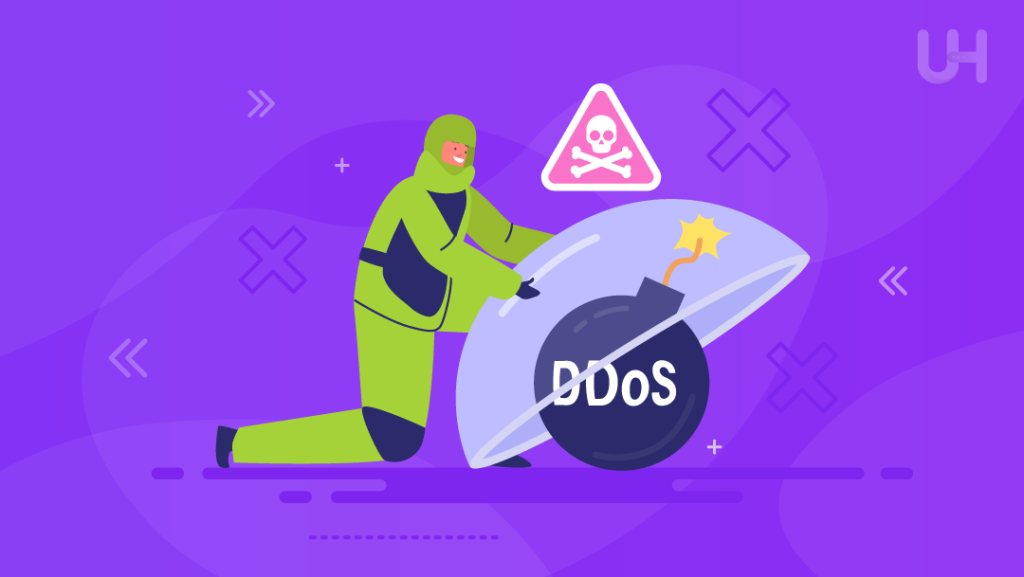
Table of Contents
Preventing a website from Distributed Denial of Service (DDoS) attacks involves a combination of technical solutions, network configurations, and security best practices. DDoS attacks overwhelm a website or server by flooding it with traffic, making it unavailable to legitimate users. Here are some effective methods to mitigate and prevent DDoS attacks:
1. Use a Web Application Firewall (WAF)
- WAFs help filter and block malicious traffic before it reaches the server. WAFs inspect incoming HTTP requests and can block suspicious traffic such as bots or attackers trying to flood your website.
- Examples: Cloudflare, AWS Shield, and Imperva.
2. Deploy Content Delivery Networks (CDN)
- CDNs distribute website content across multiple servers worldwide, making it harder for attackers to target a single location. It also helps reduce the load on your main server by serving content from nearby edge locations.
- Examples: Cloudflare, Akamai, Fastly.
3. Rate Limiting
- Rate limiting restricts the number of requests a single IP address can make within a certain time frame. This helps prevent a single source from overwhelming your server.
- Implement this at the web server level (e.g., Nginx or Apache) or through third-party services.
4. Anycast Network Routing
- Anycast routing directs traffic to the nearest data center based on location, distributing traffic evenly across servers. This makes it harder for DDoS attackers to target a single point of failure.
5. DDoS Protection Services
- Specialized DDoS mitigation services can help detect and block DDoS traffic before it reaches your server. These services use techniques like traffic analysis and real-time threat intelligence.
- Examples: Cloudflare, Arbor Networks, Radware, Akamai Kona, and AWS Shield.
6. Increase Server Capacity
- Scaling up your server resources and bandwidth can make your site more resilient. If your infrastructure can handle large amounts of traffic, it’s less likely to be overwhelmed by an attack.
7. Use Network Firewalls and Routers
- Network firewalls and routers can help block known attack sources and filter unwanted traffic. They can prevent some DDoS attacks at the network level before they hit your server.
8. IP Blacklisting and Geo-blocking
- IP blacklisting can be used to block traffic from specific IP addresses or ranges known to be part of botnets or attacks.
- Geo-blocking can prevent traffic from specific countries or regions, which are often sources of malicious traffic, if your website doesn’t serve those areas.
9. Regularly Update Software and Patches
- Ensuring your web server, applications, and firewall software are up-to-date is critical for protecting against vulnerabilities that attackers might exploit to amplify their DDoS attack.
10. Intrusion Detection and Response
- Intrusion Detection Systems (IDS) and Intrusion Prevention Systems (IPS) help monitor traffic for anomalies and take action to block suspicious activity.
11. Redundant Infrastructure
- Distribute your website across multiple servers (or even data centers) so that in case one server becomes overwhelmed, the others can handle the load. This is called redundancy.
12. Traffic Analysis and Monitoring
- Continuous traffic monitoring helps detect the early signs of an attack. Monitoring tools can alert you when there is unusual traffic behavior, allowing you to react before the attack escalates.
DDoS prevention tools
- Web application firewall (WAF): A WAF helps block attacks by using customizable policies to filter, inspect, and block malicious HTTP traffic between web applications and the Internet. With a WAF, organizations can enforce a positive and negative security model that controls incoming traffic from specific locations and IP addresses.
- Always-on DDoS mitigation: A DDoS mitigation provider can help prevent DDoS attacks by continuously analyzing network traffic, implementing policy changes in response to emerging attack patterns, and providing an expansive and reliable network of data centers. When evaluating cloud-based DDoS mitigation services, look for a provider that offers adaptive, scalable, and always-on threat protecting website against sophisticated and volumetric attacks.
By implementing a combination of these strategies, you can significantly reduce the likelihood and impact of DDoS attacks on your website.